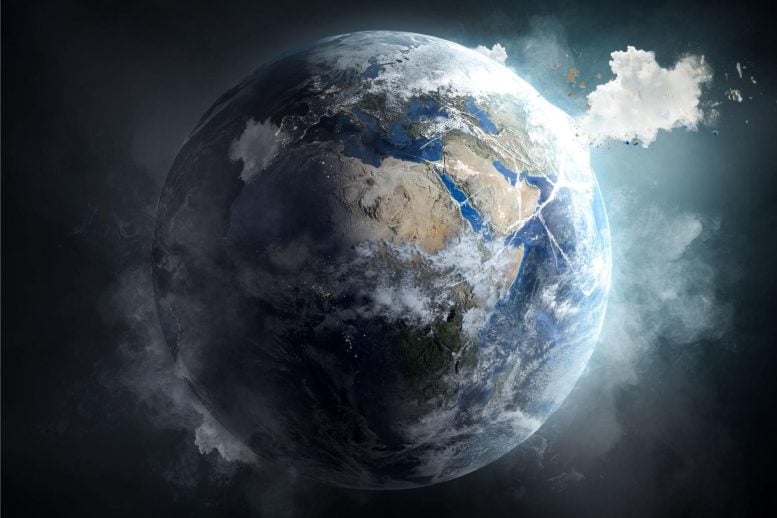[ad_1]

February 2024 was globally the warmest February on document, contrasting with excessive chilly in a number of areas. A current examine predicts that though chilly occasions will lower, their impacts could intensify, underscoring the necessity for refined local weather methods and fashions. Credit score: SciTechDaily.com
The frequency of Heat Arctic-Chilly Continent occasions is anticipated to extend till the 2020s, however is anticipated to lower after the 2030s, influencing climate patterns worldwide.
The Copernicus Local weather Change Service reported that February 2024 was the warmest February ever recorded globally. Nonetheless, North America, Asia, and components of Europe skilled record-breaking chilly temperatures. In some locations, akin to China’s Mohe and Russia’s Yakutsk, temperatures dipped to the life-threatening lowest ranges. Alarmingly, this juxtaposition of accelerating temperatures amidst excessive coldness pushes the way forward for our planet’s local weather into uncertainty.
This paradoxical scenario is captured by the Heat Arctic-Chilly Continent (WACC) phenomenon, the place heat Arctic temperatures result in sea-ice decline and chilly blasts throughout particular mid-latitude areas. The Arctic’s speedy warming signifies world local weather change. Nonetheless, as world warming and the Arctic’s temperature hold growing, it’s unclear how WACC occasions will unfold within the coming a long time.
Latest Analysis Findings
To bridge this hole, a analysis group, led by Professor Jin-Ho Yoon and together with Ph.D. scholar Yungi Hong, each from the Faculty of Earth Sciences and Environmental Engineering at Gwangju Institute of Science and Know-how, Korea, has not too long ago investigated the dynamics and evolution of utmost winter climate occasions—technically often called WACC. Utilizing simulations of local weather datasets, primarily obtained from the Neighborhood Earth System Mannequin Massive Ensemble Venture, they forecasted the trajectory of WACC occasions in East Asia and North America, spanning from 1920 to 2100. The examine’s findings have been not too long ago printed within the journal npj Local weather and Atmospheric Science.

GIST researchers predict that WACC occasions will sharply decline post-2030s, resulting in excessive climate occasions within the upcoming a long time. Credit score: Jin-Ho Yoon from GIST
Explaining their examine, Prof. Yoon emphasizes, “The WACC sample has considerably influenced winter climates, however what we see at present is merely the beginning of a drastic shift.” The analysis staff discovered that regardless of world warming, WACC occasions have continued to accentuate till the 2020s.
Prof. Yoon factors out, “These occasions will sharply decline post-2030s. But, this decline doesn’t imply diminished excessive climate occasions sooner or later. As an alternative, winters will get hotter as world warming intensifies. Though chilly snaps will happen much less continuously, they might have extra extreme penalties once they do occur.”
Lengthy-Time period Forecasts and Neighborhood Influence
This declining development will possible proceed till the WACC phenomenon virtually disappears by the late twenty first century, bringing new excessive climate occasions.
These findings reshape our understanding of the WACC occasions and spotlight the necessity to replace local weather fashions for correct predictions, enhancing preparation and response methods. The findings additionally resonate with the hardships confronted by communities worldwide, particularly these in areas traditionally affected by the WACC.
With the drastic shift within the WACC trajectory lurking nearer, fast motion is thus wanted to refine world local weather methods and reassess how societies will put together and adapt. On this regard, Mr. Hong says, “Understanding the affect of the drastic shift in WACC occasions and devising adaptation and mitigation methods determines the way forward for our winter local weather, and it’s a stark reminder of the complexity of local weather programs and the sudden outcomes of local weather change.”
Total, this examine is a compelling name for communities, policymakers, and scientists to behave. It’s wanted, now greater than ever, to collaborate and adapt as we navigate the trail to resilience in opposition to local weather change!
Reference: “From peak to plummet: impending decline of the nice and cozy Arctic-cold continents phenomenon” by Yungi Hong, S.-Y. Simon Wang, Seok-Woo Son, Jee-Hoon Jeong, Sang-Woo Kim, Baekmin Kim, Hyungjun Kim and Jin-Ho Yoon, 11 March 2024, npj Local weather and Atmospheric Science.
DOI: 10.1038/s41612-024-00611-7
[ad_2]
Supply hyperlink

